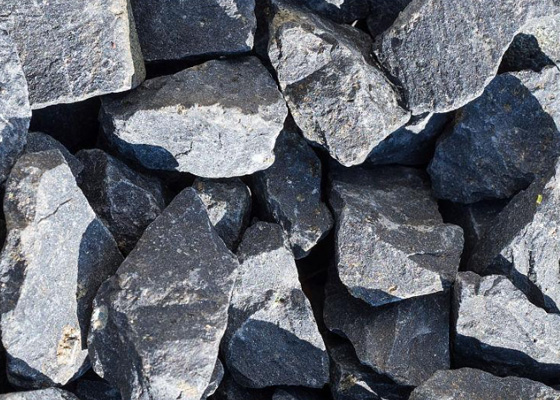A basalt crushing plant is designed to process basalt rock, which is known for its hardness and density, making it ideal for various construction applications. The plant typically includes several stages of crushing to reduce the large basalt rocks into smaller, usable materials. Depending on the end-use requirements, the crushing process may involve primary, secondary, and tertiary crushing stages. Each stage employs different types of crushers and screens to achieve the desired output size and quality.
The primary crushing stage involves reducing the large basalt boulders, often sourced directly from quarries, to manageable sizes. A jaw crusher is commonly used in this stage due to its high efficiency in handling large, hard materials. The jaw crusher crushes the basalt by compressing it between a fixed and a moving plate. The output from the primary crusher is usually in the range of 150mm to 300mm, which is then conveyed to the secondary crushing stage.

In the secondary crushing stage, a cone crusher is typically employed to further reduce the size of the basalt rocks. The cone crusher operates by squeezing the material between a moving piece of steel and a stationary piece, resulting in smaller, more uniform aggregate sizes. This stage is crucial for ensuring the basalt is broken down into pieces suitable for use in construction projects such as road base, concrete aggregate, or asphalt.

The tertiary crushing stage, if required, involves further refinement of the basalt aggregate using a vertical shaft impact (VSI) crusher or a more advanced cone crusher. This stage is necessary when specific, smaller aggregate sizes or shapes are needed for particular applications, such as in the production of fine aggregate for high-strength concrete. The VSI crusher is particularly effective for creating sand-like particles, which are essential in certain concrete mixes.
The capacity of a basalt crushing plant depends on several factors, including the types of crushers used, the layout of the plant, and the nature of the basalt material itself. Typically, basalt crushing plants can range from small-scale operations with capacities of around 50 tons per hour to large-scale plants capable of processing several hundred tons per hour. The selection of equipment and plant configuration must be carefully considered to meet the specific production goals and material quality requirements.

